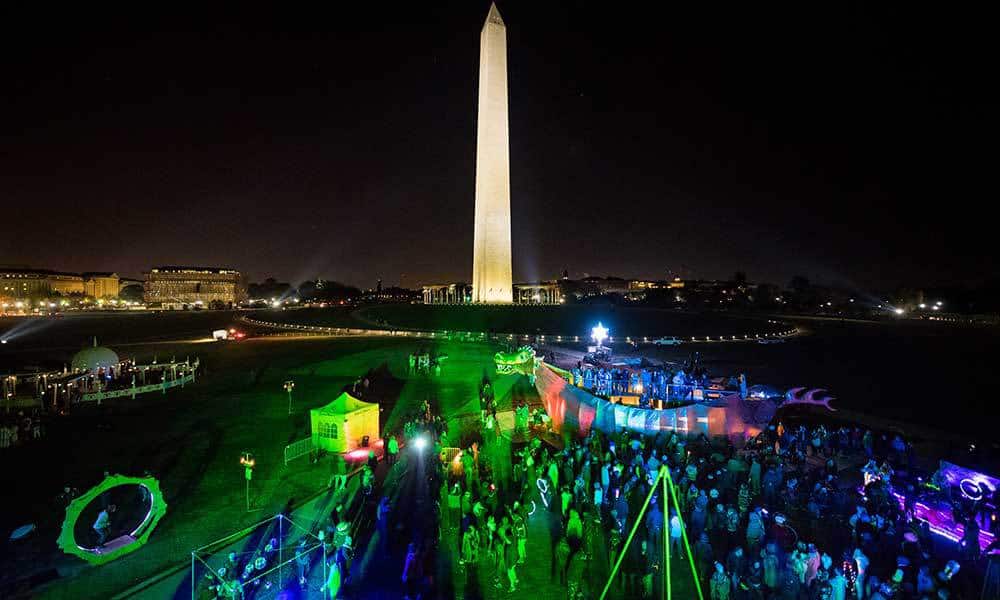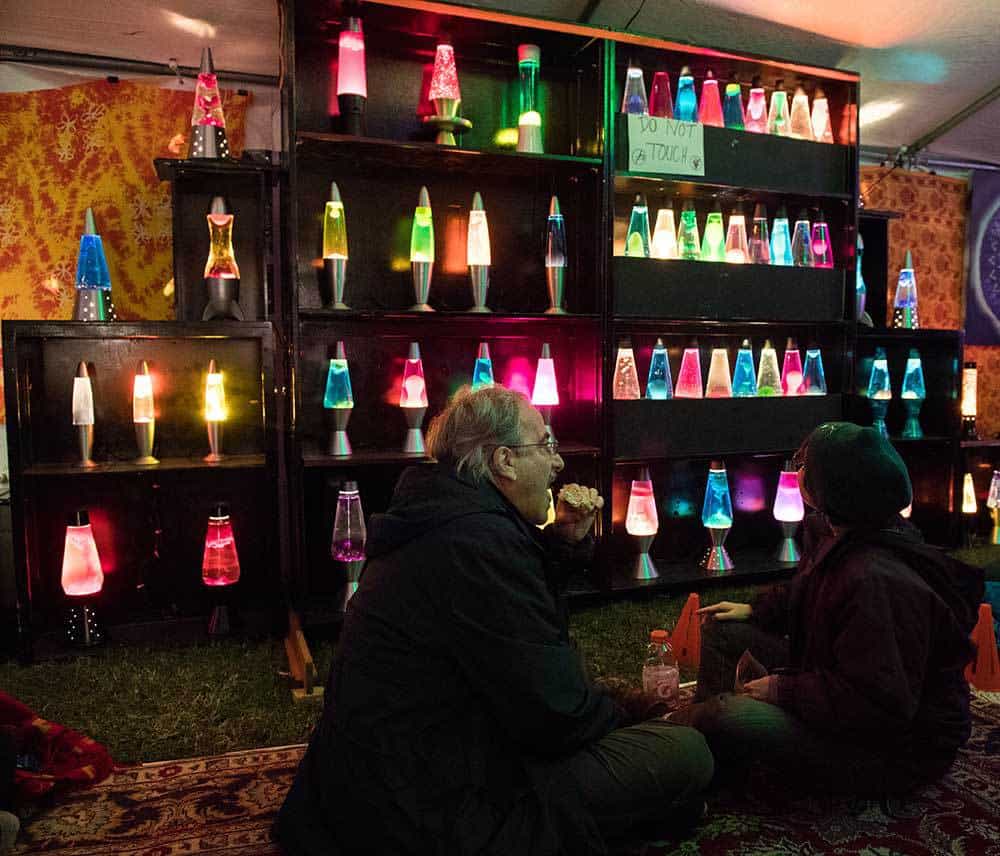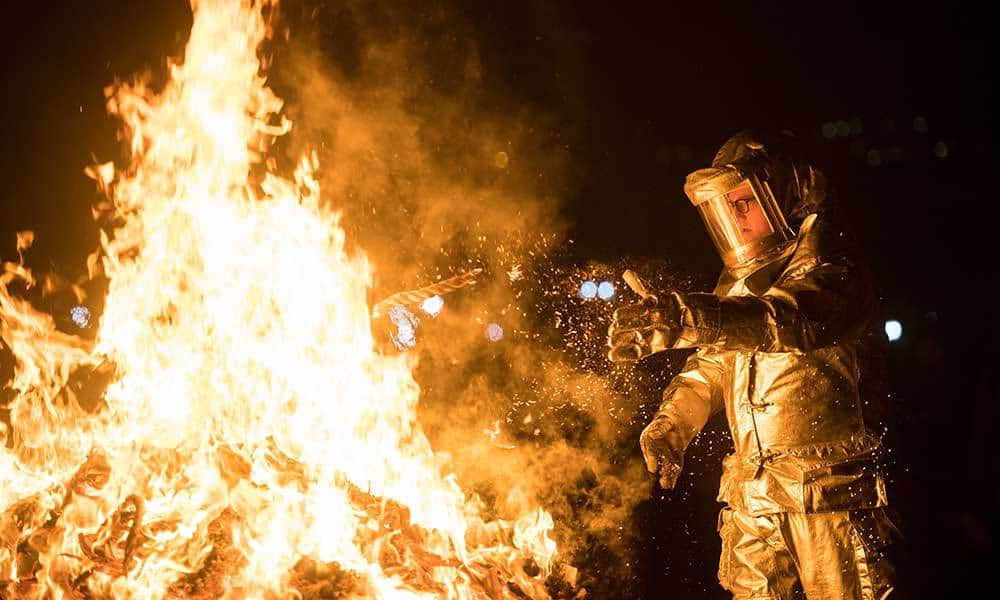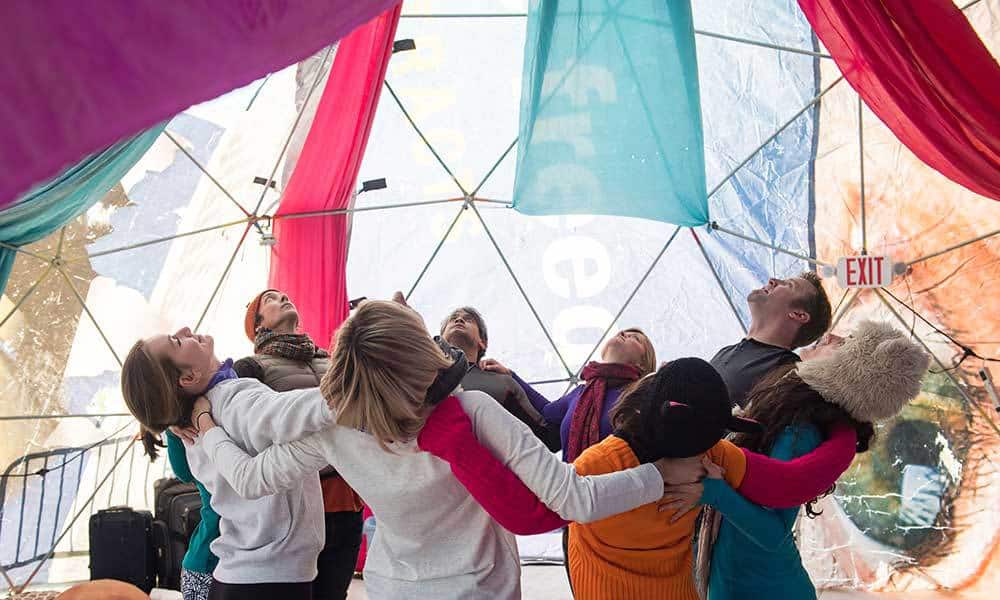What better way to make a point to Washington lawmakers than to physically draw their attention in the Capitol itself? For the third year in a row, a group of artists and activists descended on the National Mall to hold a free, open festival in accordance with Burning Man principles like “radical self-expression,” “radical inclusion” and “civic responsibility.” You could literally witness the spectacle from the back porch of the White House.
Aubrey Gemignani/CatharsisAptly titled Catharsis on the Mall, this year’s theme for the three-day vigil was the fight for equal rights for all genders. But with the participation of groups like the Multidisciplinary Association for Psychedelic Studies (MAPS) or DCMJ, which advocates for cannabis policy reform in Washington D.C., fighting the War on Drugs is among the event’s timeless, underlying themes.

The event’s inaugural message two years ago was healing from the drug war, while last year it was healing from trauma.
“The election was pretty traumatic because of how divisive it was and the shock of the results,” said Lauren Berlekamp, media liaison for Catharsis. (Incidentally, though, the theme had been set months in advance as a way to start a conversation around MAPS’ work treating PTSD with MDMA.) This year, it was women’s equality.
“Nurturing the heart, recognizing violence against women and the inequality that has existed with women in the history of our country,” Berlekamp elaborates.
And that’s not altogether separate from the drug war.
“Part of the drug warrior message is to free the psychedelics, it’s really time,” said Adam Eidinger, co-founder of DCMJ. “Cannabis, but also MDMA, LSD and mushrooms all need to be researched and there shouldn’t be automatic severe penalties for having them in your possession.”
What’s more, these substances—still prohibited under federal law—are all tools for healing from the trauma of oppression, be it from sexual assault, race and gender discrimination, or of course from serving in the military.
“We know many women have experienced rape, and we know that MAPS is studying MDMA for untreatable PTSD,” Eidinger said. “When we look at trauma in society and healing, substance outlawed by the drug war [can help] with sexual harassment, rape and violence against women. Women are using MDMA and cannabis to overcome PTSD.”
Specifically, activists at the festival were adamant in their support for the Equal Rights Amendment. Only two states away from ratification, the activists wanted to make a statement loud enough to give the ERA the final push it needs.

Last year, for instance, Catharsis participant and artist Natalie White walked 250 miles to Washington, D.C. in 16 days to speak about the ERA.
“The day I arrived in D.C., I used red paint to paint ‘ERA Now’ 20-feet-long in broad daylight on the sidewalk right in front of the Capitol building. I was arrested about a week later,” White recalled. Especially when women of color and others are arrested for cannabis use, they’re forced to give up their right to vote, to express their political will, she added. “And then we find ourselves in the democracy we have right now. The drug war is disenfranchising low-income people of color, otherwise traumatized by a system of racism, exclusion and classist hoops to jump through.

Catharsis on the Mall isn’t only meant to capture the attention of lawmakers in Washington, but the American public more generally, said Berlekamp.
“This historical land is a place to assert First Amendment rights, and exercise our free speech to discuss the things that matter and which we feel would make for a more perfect union,” she said.
Visitors and tourists who stumbled across the National Mall had the opportunity to explore the vigil, look at the art installations, dance and participate in the conversation.
One of the art installations depicted Ananda Raja, a gender-neutral reincarnation of the Hindu deity Shiva, the god of yoga, destruction and mind-altering substances, closely associated with cannabis. Different color bandanas hung from the statue, each meant to correspond to a feeling or mode of being, explained David Bronner of Dr. Bronners, a MAPS board member, or even to challenge conventions such as that men “shouldn’t” wear pink.

“It’s important for us to get outside these socialized cultural constructs of ourselves,” he said. “With so much awesome art and music, it was really cool for people to come up, especially in the era of Trump, to experience some freedom. There’s nothing like throwing this kind of party on the Mall by the Washington Monument.”














